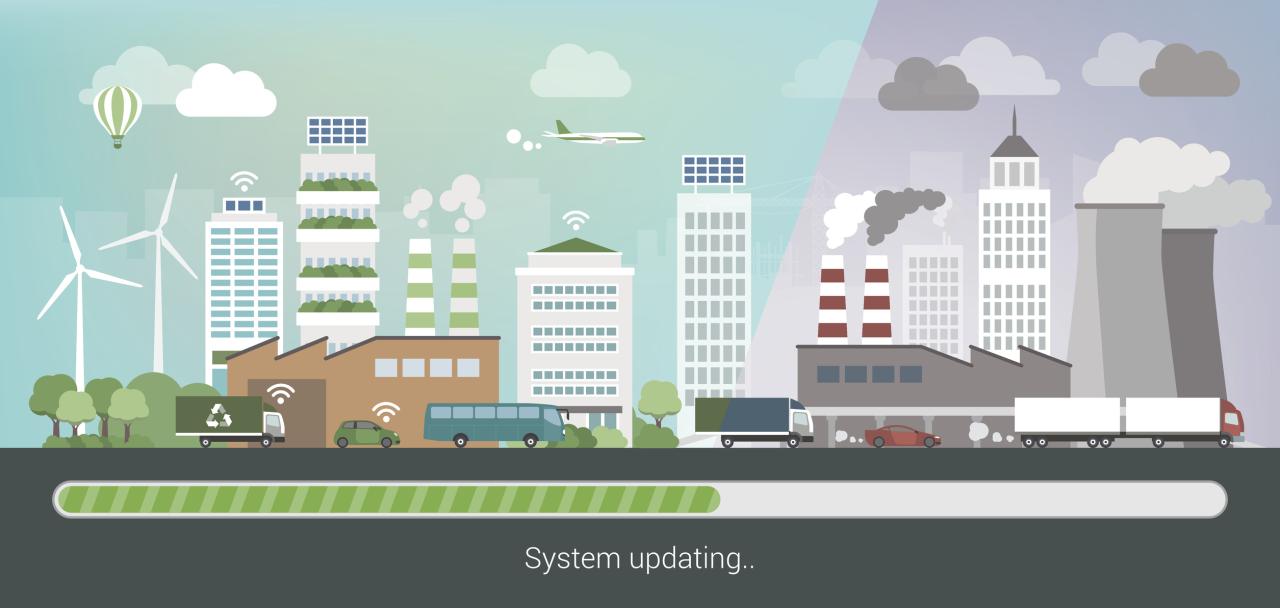
Contributing to a Sustainable Future A Guide
Contributing to a sustainable future is more than just a trend; it’s a necessity. This journey explores the multifaceted aspects of building a better tomorrow, from individual actions to global shifts, and the pivotal role of technology and societal changes. We’ll delve into the environmental, social, and economic factors that intertwine to create a sustainable future.
From the practical steps individuals can take to the innovative technologies driving progress, we’ll provide a comprehensive overview of the actions needed to foster a sustainable future. We’ll also analyze the critical environmental issues, economic considerations, and case studies that illuminate the path towards sustainability. Get ready to be inspired!
Defining Sustainability
A sustainable future isn’t just about preserving the environment; it’s about creating a harmonious balance between human needs and the health of the planet. It requires a holistic approach that considers the interconnectedness of environmental, social, and economic factors. This vision necessitates responsible resource management, equitable access to opportunities, and long-term economic viability.The pursuit of a sustainable future demands a shift in mindset, encouraging us to adopt practices that benefit both present and future generations.
This involves recognizing that our actions today will profoundly shape tomorrow’s world.
Key Principles of Sustainability
A crucial aspect of achieving a sustainable future involves understanding and embracing fundamental principles. These principles form the bedrock of responsible action and guide our efforts towards a healthier planet. Sustainability encompasses a multifaceted approach that considers the intricate relationship between the environment, society, and the economy.
- Environmental Stewardship: Protecting natural resources and ecosystems is paramount to sustainability. This includes reducing pollution, conserving water and energy, and promoting biodiversity. Protecting and restoring forests, for example, not only maintains vital oxygen production but also safeguards countless species.
- Social Equity: A sustainable future requires equitable access to resources and opportunities for all. This means promoting social justice, reducing poverty, and fostering inclusivity in all aspects of life. For example, initiatives that empower marginalized communities to participate in sustainable practices can be vital in achieving broader social equity.
- Economic Viability: Sustainable practices need to be economically viable in the long term. This means creating economic systems that support environmental protection and social equity, such as transitioning to renewable energy sources. The development of sustainable agriculture, for example, provides a balance between economic growth and environmental preservation.
Interconnectedness of Factors
Sustainability is not simply the sum of its parts; it’s the complex interplay of environmental, social, and economic factors. These factors are deeply intertwined, meaning that progress in one area often depends on progress in others. For example, a sustainable agricultural system not only protects the environment but also supports local economies and communities.
Making a difference in contributing to a sustainable future is crucial, and it often starts with local action. One fantastic example of this is the work being done by the Fox Wolf Watershed Alliance, a group dedicated to sustaining our waters. Their efforts to protect and restore ecosystems are incredibly important in achieving a healthy and sustainable future for everyone.
Learning more about their initiatives will help inspire further action in your own community. By supporting organizations like sustaining our waters the fox wolf watershed alliance , we all play a role in creating a better world for future generations.
- Environmental degradation can lead to social unrest and economic hardship. Pollution, for example, can affect public health and reduce productivity.
- Social inequality often exacerbates environmental problems. Disadvantaged communities are frequently disproportionately impacted by pollution and resource scarcity.
- Economic systems that prioritize short-term profit over long-term sustainability can deplete natural resources and exacerbate social inequalities.
Comparative Analysis of Sustainability Approaches
Different approaches to sustainability exist, each with its own strengths and weaknesses. A comparative analysis can help us understand the nuances and potential trade-offs of various strategies.
| Approach | Focus | Strengths | Weaknesses |
|---|---|---|---|
| Ecocentric | Prioritizes ecological well-being | Promotes biodiversity conservation and resource management | Potential for neglecting social and economic needs |
| Sociocentric | Focuses on social justice and equity | Addresses issues of poverty and inequality | Potential for neglecting environmental concerns |
| Economicocentric | Seeks economic growth and efficiency | Can generate wealth and create jobs | Potential for environmental degradation and social inequity |
| Holistic | Integrates environmental, social, and economic factors | Aims for balanced and sustainable development | Can be challenging to implement and monitor |
Individual Actions
Embarking on a sustainable journey begins with each of us. It’s not about monumental shifts, but rather about accumulating small, conscious choices in our daily routines. These seemingly insignificant actions, when adopted collectively, can create a ripple effect of positive change, fostering a more sustainable future for generations to come. Small steps can lead to significant progress.Individual actions are pivotal in the fight against climate change and environmental degradation.
Our daily habits, from the food we eat to the energy we consume, directly impact the planet. By understanding our personal responsibility and implementing sustainable practices, we can collectively work towards a healthier and more equitable world.
Everyday Actions for Sustainability
Our everyday choices have a profound impact on the environment. By consciously selecting sustainable options, we can contribute to a healthier planet. Simple actions, such as reducing our consumption of single-use plastics, opting for reusable alternatives, and supporting local farmers markets, can collectively make a substantial difference.
- Reducing Consumption: Minimizing our consumption of products, especially single-use items like plastic bags and bottled water, is a vital step towards sustainability. Consider purchasing items with minimal packaging and opting for reusable alternatives. By reducing our need for new products, we decrease the demand that fuels the manufacturing process, lowering our overall environmental footprint.
- Promoting Sustainable Transportation: Choosing sustainable transportation methods like walking, cycling, or using public transport reduces our reliance on fossil fuel-based vehicles. This directly lowers our carbon emissions and promotes healthier lifestyles. Carpooling or using electric vehicles are additional ways to minimize our transportation’s environmental impact.
- Conserving Water and Energy: Implementing water-saving techniques, such as fixing leaky faucets and taking shorter showers, conserves this precious resource. Similarly, reducing energy consumption by turning off lights and appliances when not in use conserves energy and reduces reliance on fossil fuels.
- Supporting Local Farmers Markets: Buying locally grown produce reduces the environmental impact of transporting food over long distances. Supporting local farmers markets also helps sustain local economies and promotes sustainable agricultural practices.
Personal Responsibility in Sustainability
Personal responsibility is crucial for creating a sustainable future. Understanding our impact on the environment and actively working to minimize it is a significant part of this responsibility. We are all interconnected, and our collective actions determine the future of our planet.
“Every individual has a role to play in shaping a sustainable future. By embracing conscious choices and responsible actions, we contribute to a healthier planet for present and future generations.”
Actionable Steps for Individuals
Taking actionable steps is essential for translating our commitment to sustainability into tangible results. These steps are designed to make a positive impact, no matter how small.
- Conducting a Personal Sustainability Audit: Evaluating our current habits and identifying areas where we can make sustainable changes is the first step towards a more sustainable lifestyle. Assess our energy consumption, water usage, and waste production to understand our impact.
- Setting Realistic Goals: Establish achievable goals that align with our individual circumstances and resources. Small, incremental changes are more likely to be sustained than drastic overhauls.
- Seeking Out and Supporting Sustainable Businesses: Choosing to patronize businesses committed to sustainable practices is a powerful way to support environmental responsibility. Supporting businesses that use recycled materials, reduce waste, and promote eco-friendly products fosters a positive impact.
- Educating Yourself and Others: Staying informed about sustainability issues and sharing this knowledge with others is crucial for creating a collective understanding and encouraging positive change.
Promoting Sustainable Behaviors in Communities
Promoting sustainable behaviors within communities fosters a culture of environmental responsibility. This approach is essential for fostering collective action and achieving broader change.
- Community Awareness Campaigns: Organizing campaigns to raise awareness about sustainability issues and promote sustainable practices can encourage broader adoption of these principles.
- Creating Sustainable Initiatives: Implementing initiatives that support sustainable practices in communities, such as establishing community gardens, promoting public transportation, or creating recycling programs, can promote widespread adoption.
- Collaborating with Local Businesses: Collaborating with local businesses to promote sustainable practices and products can create a ripple effect of positive change, encouraging broader community participation.
Technological Advancements: Contributing To A Sustainable Future

Technology is no longer a separate entity from our pursuit of a sustainable future; it is an indispensable partner. Its potential to revolutionize energy production, resource management, and waste reduction is immense. From harnessing the power of the sun to developing innovative materials, technology holds the key to unlocking a more sustainable world. The pace of technological advancement is accelerating, opening up new avenues for tackling environmental challenges and paving the way for a greener tomorrow.Technological advancements are critical to mitigating the environmental impact of human activities.
By developing and implementing sustainable technologies, we can reduce our reliance on fossil fuels, conserve resources, and minimize pollution. This involves exploring alternative energy sources, optimizing resource use, and creating innovative waste management strategies. These advancements are not just theoretical; they are already impacting industries and communities around the world.
Renewable Energy Sources
Renewable energy sources, such as solar, wind, and hydro power, offer a pathway to a cleaner energy future. They provide a sustainable alternative to fossil fuels, reducing our dependence on finite resources and minimizing greenhouse gas emissions. Solar panels, for example, convert sunlight into electricity, while wind turbines harness the kinetic energy of wind. Hydropower utilizes the natural flow of water to generate power.
These technologies are constantly evolving, becoming more efficient and cost-effective. The integration of these technologies into existing infrastructure is crucial for widespread adoption and a significant reduction in our carbon footprint.
Sustainable Technologies for Waste Management
Innovative technologies are being developed to address waste management issues. These include advanced recycling processes, waste-to-energy technologies, and bioremediation techniques. Advanced recycling processes can recover valuable materials from waste streams, reducing landfill burden and promoting circular economy principles. Waste-to-energy technologies convert waste into usable energy, minimizing landfill space and generating electricity. Bioremediation techniques utilize microorganisms to break down pollutants and contaminants in soil and water.
These technologies are transforming how we manage waste, moving us towards a more circular and sustainable model.
Comparison of Technological Solutions
Different technological solutions for sustainability vary in their effectiveness, efficiency, and feasibility. Factors such as cost, environmental impact, and scalability play crucial roles in assessing the suitability of each technology. For instance, solar power is highly scalable and has a low environmental impact, but its efficiency can be affected by weather conditions. Wind power is another renewable energy source with a low environmental impact, but its implementation is dependent on suitable wind resources.
The optimal approach often involves a combination of different technologies, tailored to specific geographic locations and resource availability.
Table of Sustainable Technologies
| Technology | Advantages | Disadvantages |
|---|---|---|
| Solar Power | Abundant resource, low environmental impact, relatively low maintenance | Intermittency of sunlight, land use, manufacturing process |
| Wind Power | Abundant resource, low environmental impact, relatively low maintenance | Intermittency of wind, visual impact, noise pollution |
| Hydropower | High energy output, reliable power generation | Environmental impact on river ecosystems, dam construction challenges |
| Advanced Recycling | Reduces landfill waste, recovers valuable materials, promotes circular economy | Cost of implementation, sorting complexities |
Societal Shifts
A sustainable future hinges not just on individual actions or technological breakthroughs, but also on profound societal shifts. These shifts encompass fundamental changes in how we think, live, and interact with the world around us. This requires a collective commitment to prioritize environmental protection and resource efficiency, influencing everything from government policies to personal choices. We need to move beyond individual responsibility and recognize the critical role of societal structures in shaping sustainable practices.Transforming our societies necessitates a paradigm shift, moving away from a linear “take-make-dispose” model to a circular economy that emphasizes reuse, repair, and regeneration.
This necessitates not just changes in individual behavior, but also significant changes in societal norms, values, and regulations.
Importance of Societal Changes
Societal changes are crucial for a sustainable future because they create an environment conducive to long-term environmental protection and resource management. These changes foster collective action, promoting sustainable behaviors and practices across diverse sectors of society.
Policies and Regulations Supporting Sustainability
Numerous policies and regulations support sustainability. Examples include carbon pricing mechanisms, such as carbon taxes or cap-and-trade systems, incentivizing the reduction of greenhouse gas emissions. Regulations on pollution levels, promoting renewable energy adoption, and establishing protected areas are crucial steps toward a sustainable future.
- Carbon pricing: Carbon taxes or cap-and-trade systems place a price on carbon emissions, making activities that generate high emissions more expensive and encouraging businesses and individuals to reduce their carbon footprint.
- Renewable energy mandates: Regulations mandating a certain percentage of electricity generation from renewable sources, such as solar and wind, accelerate the transition to cleaner energy sources.
- Sustainable transportation policies: Policies promoting public transportation, cycling infrastructure, and electric vehicles encourage a shift away from fossil fuel-dependent transportation.
These policies and regulations create a framework that supports sustainable practices, incentivizes innovation, and drives collective action.
International Cooperation in Addressing Sustainability Challenges
Global sustainability challenges require international cooperation. Climate change, biodiversity loss, and resource depletion are transboundary issues that necessitate collaborative efforts across nations. Agreements and partnerships between countries are essential for effective implementation of sustainable solutions.
- International agreements: The Paris Agreement on climate change is a prime example of international cooperation to mitigate climate change, demonstrating the need for global collaboration on environmental issues.
- Joint research and development: International collaboration on research and development in sustainable technologies, such as renewable energy and sustainable agriculture, can accelerate innovation and accelerate the transition to a sustainable future.
- Sharing of best practices: Exchange of information and best practices among nations can facilitate the adoption of sustainable policies and technologies across the globe.
International cooperation fosters a shared responsibility and accelerates the global transition towards a sustainable future.
Education and Awareness in Fostering Sustainable Behaviors
Education and awareness play a critical role in shaping sustainable behaviors. Educating individuals about environmental issues and promoting awareness about the consequences of unsustainable practices are fundamental steps in fostering a culture of sustainability.
- Environmental education in schools: Integrating environmental education into school curricula fosters a deeper understanding of environmental issues and empowers future generations to make sustainable choices.
- Public awareness campaigns: Raising public awareness about environmental challenges through public campaigns, documentaries, and educational materials can drive individual action.
- Promoting sustainable consumption patterns: Raising awareness about the environmental impact of consumer choices, encouraging responsible consumption patterns, and promoting sustainable alternatives can drive individual and collective action.
Promoting education and awareness creates informed individuals and communities committed to sustainable practices.
Influence of Social Norms and Values on Sustainable Practices
Social norms and values profoundly influence sustainable practices. If society values environmental protection, sustainable practices are more likely to be adopted and integrated into everyday life. Cultural values that prioritize communal well-being and respect for nature can facilitate the adoption of sustainable lifestyles.
Thinking about ways to contribute to a sustainable future is crucial, and local developments like the new project near the Fox River in Oshkosh, Wisconsin, are a great example. Oshkosh eyes new development near fox river could potentially incorporate eco-friendly building practices, promoting energy efficiency, and utilizing sustainable materials. This, in turn, helps us move toward a more environmentally responsible future for everyone.
Roles in Achieving a Sustainable Future
| Aspect | Government | Businesses | Individuals |
|---|---|---|---|
| Policy & Regulations | Establish and enforce regulations; incentivize sustainable practices; provide funding for research and development. | Comply with regulations; adopt sustainable business practices; invest in sustainable technologies. | Support policies that promote sustainability; make sustainable choices in daily life. |
| Innovation & Technology | Fund research and development in sustainable technologies; create supportive infrastructure. | Invest in sustainable technologies; develop innovative solutions; adopt eco-friendly products. | Advocate for the adoption of sustainable technologies; support businesses that use sustainable technologies. |
| Education & Awareness | Implement educational programs; promote awareness campaigns; fund environmental research. | Promote sustainability within their organizations; educate employees on sustainable practices. | Seek out information on sustainable practices; learn about environmental issues; share knowledge with others. |
Environmental Impact
Our planet faces a multitude of interconnected environmental challenges that demand urgent attention and collective action. These issues, from the alarming rate of climate change to the depletion of vital resources, are not isolated problems but rather symptoms of a larger unsustainable system. Addressing these environmental impacts is crucial for ensuring a healthy and prosperous future for all.Understanding the complex web of environmental issues and their interconnectedness is essential to developing effective solutions.
The degradation of ecosystems, driven by unsustainable practices, threatens biodiversity and the delicate balance of natural systems. Ultimately, the well-being of humanity is intrinsically linked to the health of the environment.
Critical Environmental Issues
The interconnected nature of environmental problems makes it difficult to isolate specific causes and effects. Deforestation, pollution, and resource depletion are all contributing factors to a wider array of issues, including climate change, biodiversity loss, and water scarcity. Each of these issues, in turn, exacerbates the others, creating a vicious cycle of environmental degradation.
Impact of Climate Change
Climate change, driven primarily by human activities, is rapidly altering global ecosystems. Rising global temperatures are leading to more frequent and intense heatwaves, droughts, floods, and wildfires. These extreme weather events have devastating consequences for human populations, infrastructure, and agriculture. For example, the 2023 heatwave in Europe resulted in widespread power outages and deaths. The increased frequency of severe weather events underscores the urgency of addressing climate change.
Unsustainable Practices and Their Environmental Impacts
Unsustainable practices, such as excessive consumption, deforestation, and pollution, have significant environmental impacts. Over-reliance on fossil fuels contributes significantly to greenhouse gas emissions, accelerating climate change. Deforestation destroys habitats and reduces carbon sequestration, further exacerbating climate change. The accumulation of plastic waste pollutes oceans and harms marine life. These unsustainable practices have far-reaching and devastating consequences for the environment.
Key Environmental Indicators of Sustainability
Monitoring environmental indicators is crucial for evaluating the effectiveness of sustainability efforts. These indicators provide a quantitative measure of environmental health and allow us to track progress toward sustainability goals. Some key indicators include greenhouse gas emissions, deforestation rates, water quality, biodiversity loss, and resource depletion. These indicators help us assess the impact of our actions and identify areas for improvement.
- Greenhouse Gas Emissions: Tracking emissions is crucial for understanding and mitigating climate change. Measuring emissions from various sectors, such as transportation and industry, is essential to develop effective policies and technologies for reducing them.
- Deforestation Rates: Monitoring deforestation provides insights into habitat loss and biodiversity decline. Measuring forest cover and identifying the drivers of deforestation are crucial steps towards sustainable forest management.
- Water Quality: Assessing water quality is essential for understanding the health of aquatic ecosystems and the availability of clean drinking water. Monitoring pollutants and ensuring water purity are critical for human health and ecosystem well-being.
Environmental Footprint of Different Lifestyles
Different lifestyles have varying environmental impacts. Consuming large quantities of meat, flying frequently, and using excessive amounts of energy are all unsustainable practices that contribute to a larger environmental footprint. Sustainable lifestyles, characterized by conscious consumption and reduced waste, significantly lower the environmental impact. For example, reducing meat consumption can significantly reduce greenhouse gas emissions.
Environmental Issues and Potential Solutions
| Environmental Issue | Potential Solutions |
|---|---|
| Climate Change | Transition to renewable energy sources, improve energy efficiency, sustainable transportation, reforestation, carbon capture and storage |
| Deforestation | Sustainable forestry practices, reforestation, combating illegal logging, promoting responsible land use |
| Pollution | Waste reduction, recycling, sustainable manufacturing processes, stricter environmental regulations, promoting clean technologies |
| Biodiversity Loss | Protected areas, habitat restoration, combating poaching, reducing pollution, sustainable agriculture |
Economic Considerations
Embracing sustainability isn’t just an ethical imperative; it’s a powerful driver of economic opportunity. Sustainable practices can foster innovation, create new markets, and ultimately lead to a more resilient and prosperous future. The economic benefits of transitioning to a sustainable model are multifaceted and extend far beyond environmental considerations.
Making a difference in the world, even in small ways, is key to contributing to a sustainable future. The recent redesignation of the Stevens Points Breast Care Center, as highlighted in this article stevens points breast care center receives redesignation , shows how prioritizing health and well-being can be a vital part of this larger picture. Ultimately, supporting initiatives like this, along with many others, will continue to propel us towards a more sustainable and healthier future for everyone.
Economic Benefits of Sustainable Practices
Sustainable practices, when implemented effectively, can lead to cost savings in various sectors. Reduced resource consumption, optimized energy efficiency, and waste minimization can translate into significant financial advantages for businesses and individuals. Improved resource management can also lead to greater resilience against supply chain disruptions and fluctuating market prices. The long-term benefits often outweigh the initial investment costs, highlighting the value proposition of sustainable initiatives.
Role of Sustainable Business Models
Sustainable business models are crucial for achieving a sustainable future. These models prioritize environmental protection and social responsibility alongside profit generation. They often incorporate circular economy principles, minimizing waste and maximizing resource utilization. Innovative business models can drive the development of new technologies and products that address sustainability challenges while creating new market opportunities. For instance, companies focusing on renewable energy or sustainable agriculture often pioneer new business strategies.
Examples of Sustainable Economic Initiatives
Numerous initiatives demonstrate the potential of sustainable economic models. Transitioning to renewable energy sources, such as solar and wind power, is a prime example. Sustainable agriculture practices, such as organic farming and precision agriculture, improve resource efficiency and food security. Companies adopting circular economy principles, reusing materials and designing for durability, are also demonstrating the potential for sustainable economic growth.
Economic Incentives and Disincentives
Government policies and regulations play a significant role in shaping the economic landscape of sustainability. Incentives, such as tax credits for renewable energy installations or subsidies for sustainable agriculture, encourage the adoption of sustainable practices. Conversely, disincentives, such as high carbon taxes or lack of regulations for sustainable practices, can hinder the transition. This highlights the importance of well-designed policies that support the shift toward a sustainable economy.
Importance of Sustainable Investments
Sustainable investments are essential for driving capital towards sustainable projects and technologies. These investments prioritize companies and projects that demonstrate a commitment to environmental and social responsibility. Such investments promote a transition towards a low-carbon economy, fostering innovation and creating long-term value. A recent trend shows a significant increase in the demand for sustainable investment products.
Comparison of Sustainable and Unsustainable Businesses
| Characteristic | Sustainable Business | Unsustainable Business |
|---|---|---|
| Resource Efficiency | Optimized resource use, minimizing waste, and maximizing recycling | High resource consumption, significant waste generation, and limited recycling |
| Environmental Impact | Minimized environmental footprint, compliance with environmental regulations | High environmental impact, potential for environmental damage and liabilities |
| Innovation | Driven by sustainability needs, leading to new products and services | Driven by traditional models, limited innovation in sustainable areas |
| Cost | Potential for long-term cost savings, due to efficiency gains | Potential for increased costs due to environmental damage and regulations |
| Profitability | Sustainable businesses can achieve long-term profitability and resilience | Unsustainable businesses face risks of penalties, fines, and reputational damage |
Case Studies

Delving into successful initiatives provides invaluable insights into achieving a sustainable future. Analyzing real-world examples reveals effective strategies, highlighting the importance of context-specific solutions and showcasing the potential for positive change. Understanding the lessons learned from these projects allows us to adapt and improve future endeavors.
Successful Initiatives Promoting a Sustainable Future
Numerous initiatives demonstrate the viability of sustainable practices. From community-based projects to large-scale governmental programs, these examples offer valuable insights into achieving sustainability. Examining their implementation, impact, and challenges provides a blueprint for future endeavors.
- The Transition Town Movement: This global movement focuses on localizing economies and reducing reliance on fossil fuels. Transition Towns organize communities to develop sustainable solutions, such as creating local food systems and promoting renewable energy. The success of these projects often lies in community engagement and collaborative problem-solving.
- The Copenhagen Climate Change Conference: The 2009 Copenhagen Accord provided a framework for international cooperation on climate change mitigation. While not fully achieving its ambitious goals, it fostered critical dialogue and laid the groundwork for subsequent international agreements. The lessons learned emphasize the importance of international collaboration and the need for ambitious targets.
- The Patagonia Company’s Sustainability Initiatives: Patagonia’s commitment to environmental responsibility extends beyond marketing. Their dedication to reducing their environmental footprint through supply chain improvements, product longevity, and advocating for environmental policies is a model for businesses. This approach demonstrates the potential for corporations to contribute meaningfully to sustainability.
Detailed Descriptions of Specific Projects
Examining specific projects provides a deeper understanding of successful initiatives. These case studies offer practical insights into the implementation and execution of sustainable projects.
- The Green Building Project in Amsterdam: Amsterdam has a program to encourage the development of sustainable buildings. The program incentivizes developers to adopt energy-efficient design and construction techniques. The project has significantly reduced energy consumption and waste generation in the city’s built environment. This showcases the effectiveness of policy interventions to drive change in specific sectors.
- The Transition Town Totnes in the UK: Totnes, UK, is a model for a sustainable community. The town has implemented several initiatives, such as creating a local food system and promoting renewable energy. The project illustrates the importance of community engagement and the ability of local initiatives to generate significant impact.
Lessons Learned from Case Studies
Examining the successes and failures of past initiatives provides invaluable lessons. These lessons underscore the importance of adaptability, community engagement, and effective policies in achieving sustainable outcomes.
- Adaptability and Flexibility: Successfully implementing sustainable initiatives requires flexibility. Initiatives must be responsive to the specific context and adaptable to unforeseen challenges.
- Community Engagement: Successful projects often involve active participation from the community. This ensures buy-in, ownership, and long-term commitment to the initiative.
- Effective Policies and Regulations: Government policies play a critical role in driving sustainable development. Clear regulations and incentives can incentivize sustainable practices and guide the direction of projects.
Comparison of Different Approaches
Comparing different approaches to sustainability highlights the effectiveness of diverse strategies. This comparison allows us to identify best practices and tailor approaches to specific contexts.
| Case Study | Approach | Effectiveness | Positive Impacts |
|---|---|---|---|
| Transition Town Totnes | Community-based initiatives | High | Improved local food systems, renewable energy adoption |
| Patagonia | Corporate responsibility | High | Reduced environmental impact, supply chain improvements |
| Amsterdam Green Building Project | Policy-driven incentives | High | Reduced energy consumption, waste reduction |
Illustrative Examples
Embarking on a sustainable future requires tangible examples to inspire action. These illustrations showcase how practical applications of sustainable principles can transform various sectors. From urban planning to agricultural practices, the examples below provide concrete blueprints for achieving a more environmentally conscious and economically viable world.Sustainable practices are not just about reducing environmental impact; they also offer economic benefits, social equity, and a higher quality of life.
These examples demonstrate the interconnectedness of these aspects, showcasing how sustainability can be more than a trend, but a transformative force.
A Sustainable City: Eco-Friendly Copenhagen
Copenhagen, Denmark, stands as a model for sustainable urban development. Its commitment to cycling infrastructure, extensive public transportation, and a focus on green spaces exemplifies a holistic approach to urban sustainability. The city prioritizes walkability and bike-friendliness, minimizing reliance on private vehicles. This, combined with the city’s investment in renewable energy sources, demonstrates the potential of a city to reduce its environmental footprint.
Copenhagen’s success is not solely attributed to government policies, but also to the active participation of its citizens, who embrace the concept of sustainable living. The city’s focus on recycling and waste management, along with its promotion of locally sourced food, further strengthens its commitment to sustainability.
A Sustainable Agricultural Practice: Regenerative Agriculture
Regenerative agriculture prioritizes soil health and biodiversity, unlike conventional methods that often deplete soil nutrients. This approach focuses on practices like cover cropping, crop rotation, and reduced tillage, all aimed at increasing soil organic matter. By nurturing soil health, regenerative agriculture enhances water retention, reducing the need for irrigation and promoting biodiversity. This leads to healthier crops, greater resilience to pests and diseases, and reduced reliance on synthetic inputs.
Examples include the use of cover crops like legumes to fix nitrogen in the soil, improving soil structure and fertility.
A Sustainable Transportation System: Electric Vehicle Adoption
The transition to electric vehicles (EVs) is a significant step toward a sustainable transportation system. The adoption of EVs, powered by renewable energy sources, reduces greenhouse gas emissions compared to traditional combustion engine vehicles. Government incentives and technological advancements are driving this transition. The shift to EVs, combined with investments in robust charging infrastructure, presents a promising pathway for achieving sustainable transportation.
Cities are increasingly promoting carpooling, cycling, and walking to reduce reliance on private vehicles.
Benefits of a Sustainable Food System: Local Food Networks
Local food networks, encompassing farmers’ markets, community gardens, and direct-to-consumer sales, foster a sustainable food system. These networks reduce transportation distances, minimizing the carbon footprint associated with food distribution. They also promote regional food security and support local farmers. Local food systems provide fresh, nutritious food, and often feature products tailored to local conditions. They support local economies and create employment opportunities in agriculture, processing, and distribution.
A Sustainable Fashion Industry: Circular Fashion
The circular fashion model emphasizes reducing waste and promoting the reuse and recycling of clothing and textiles. This involves extending the lifespan of garments, promoting repair and upcycling, and investing in sustainable materials. Brands are embracing eco-friendly production methods, like using organic cotton or recycled materials. The rise of rental services and clothing swaps, further highlights the shift towards a more circular approach to fashion.
Sustainable Tourism Practices: Eco-Tourism, Contributing to a sustainable future
Eco-tourism focuses on responsible travel that minimizes environmental impact and supports local communities. This includes respecting local ecosystems, minimizing waste, and supporting local businesses. Eco-tourism initiatives often involve promoting sustainable practices within destinations, such as using renewable energy sources in hotels and encouraging the use of public transportation. It often entails educating tourists about local culture and history, promoting conservation, and generating revenue for local communities.
Ultimate Conclusion

In conclusion, contributing to a sustainable future is a collective effort requiring individual responsibility, technological innovation, and societal shifts. By understanding the interconnectedness of environmental, social, and economic factors, we can implement practical strategies and inspire meaningful change. The journey towards a sustainable future is a continuous process of learning, adapting, and striving for a better world. Let’s commit to building a sustainable future, together.






